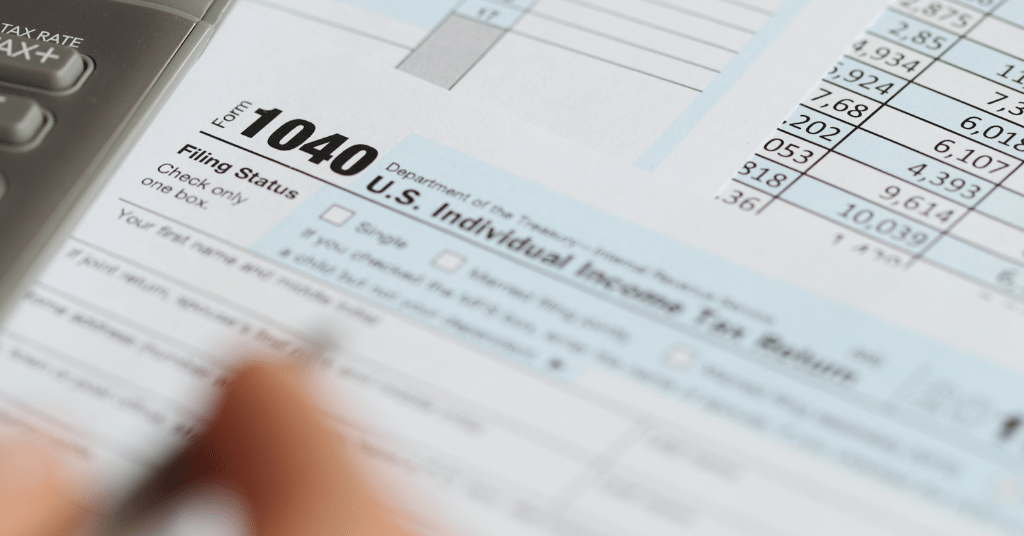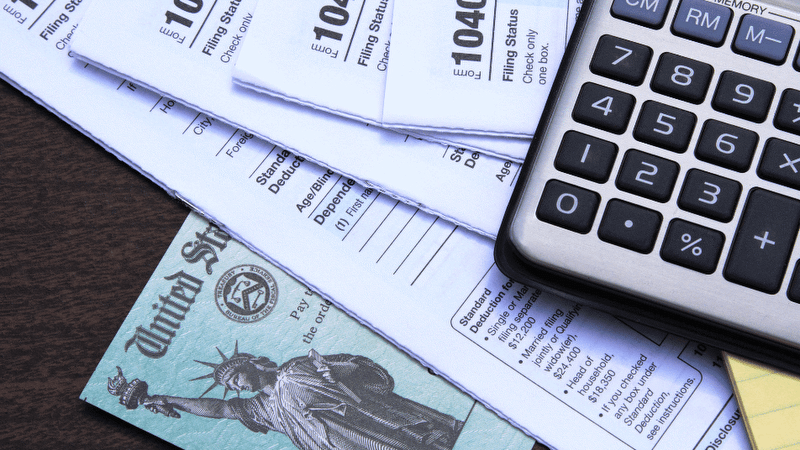Looking for a Last Minute Tax Deduction?
Learn how to reduce your tax bill while saving for retirement.
Posted on April 24, 2023 by Sarah Shellam

How do tax deductions work?
Essentially, a deduction is the amount of money you can subtract from your taxable income. Instead of giving money to the IRS, you can put it in a retirement account – your Traditional IRA. When tax time comes around, the amount of tax you owe is calculated based on your income minus the amount you put in your IRA. This means that you owe less in taxes and can keep more of your hard-earned money.
One of the deductions you can take advantage of before the deadline is contributing to a Traditional IRA. As of 2022, you can contribute up to $6,000 a year, or $7,000 if you're over 50. To get the full tax deduction, you need to qualify based on your income. For example, if you're single and make less than $68,000 a year, you qualify for the full $6,000 tax deduction. Someone with a $50,000 base salary contributes $7,000 to a traditional IRA and qualifies for a deduction. Now only $43,000 is taxable income instead of the full $50,000, while keeping $39,250 as opposed to $38,000 because of the contribution made. See the example below. If your income is higher, there is a small phase-out range where you may receive a partial deduction. These numbers may change over time, so it's important to stay up to date on the latest information.
Can a small business have tax deductions?
What about a tax deduction for small business owners or self-employed individuals? They may not have the traditional W2 income and wonder what options they have for saving for retirement. This is where the SEP IRA comes in, a retirement plan that is popular among small business owners. The SEP IRA is easy to set up and offers large contributions and tax deductions. It stands for a self-employed pension plan, and as the name suggests, it is designed for self-employed individuals. You can contribute up to 20% of your 1099 income or Schedule C income or 25% of your W2 wages after tax. The nice thing about this plan is that the contribution amount comes out to be the same, whether you have a W2 or 1099 income.For example, if you pay yourself $100,000 a year, and after taxes and deductions, you end up with $81,000. You can contribute $20,000 to your SEP IRA, which is fully tax-deductible. This means that the IRS will calculate your income on the $81,000, not the $100,000, resulting in a lower tax liability. The SEP IRA allows contributions of up to $61,000 for the previous year, but to do so, you must pay yourself a high salary. So, it may not be feasible for everyone, but it's good to know the potential for large contributions.
As a self-employed individual with a SEP IRA, it's important to understand that the business is the one making contributions, not the individual. This means that the company would take the tax deduction, but as the business owner, you still benefit. Additionally, you can now make the entire contribution to a Roth IRA. If you have employees, you must contribute the same percentage of income to their SEP IRA as you do to your own.
HSAs and tax deductions
One great option for self-directed plans is the Health Savings Account (HSA). When you contribute to an HSA, you get an immediate tax deduction and can spend the money tax-free on medical expenses. This includes not just doctor visits, but also dental visits, over-the-counter medication, and even COVID-related expenses like face masks and hand sanitizer. However, you must have a high deductible insurance plan to qualify for an HSA. Contribution limits for HSAs vary based on your insurance plan and marital status.For example, let's assume that you're self-employed and have a W2 income of $100,000. We'll also assume that you're in a 25% tax bracket, meaning you owe $25,000 to the IRS. Additionally, let's assume that you qualify for traditional IRAs and HSAs and that you're married and filing jointly, which allows for certain deductions, with several potential savings options.
- If you set up a Traditional IRA, you can contribute $6,000 for yourself and another $6,000 for your spouse, which saves you $12,000 and reduces your taxable income to $88,000.
- As a self-employed individual, you can also set up a SEP IRA and contribute some of your income or $10,000 in the example we used. The business you own would receive a $10,000 tax deduction, which is separate from your personal deduction. This brings your total retirement savings to $22,000, with a current taxable income of $88,000.
- If you're 45 years old and not on Medicare, you can also set up a Health Savings Account (HSA) if you have a high-deductible health plan. In this scenario, you can contribute up to $7,750, which is fully deductible. Remember, these are general assumptions, and your specific circumstances may vary. If you have any questions, feel free to ask.
As you look at your finances for the year, you may realize that you are able to decrease your taxable income, and if you're able to save money for yourself and decrease your taxable income, then you should take advantage of it. If you have more questions, please reach out to our staff and we can have a one on one conversation with you!








